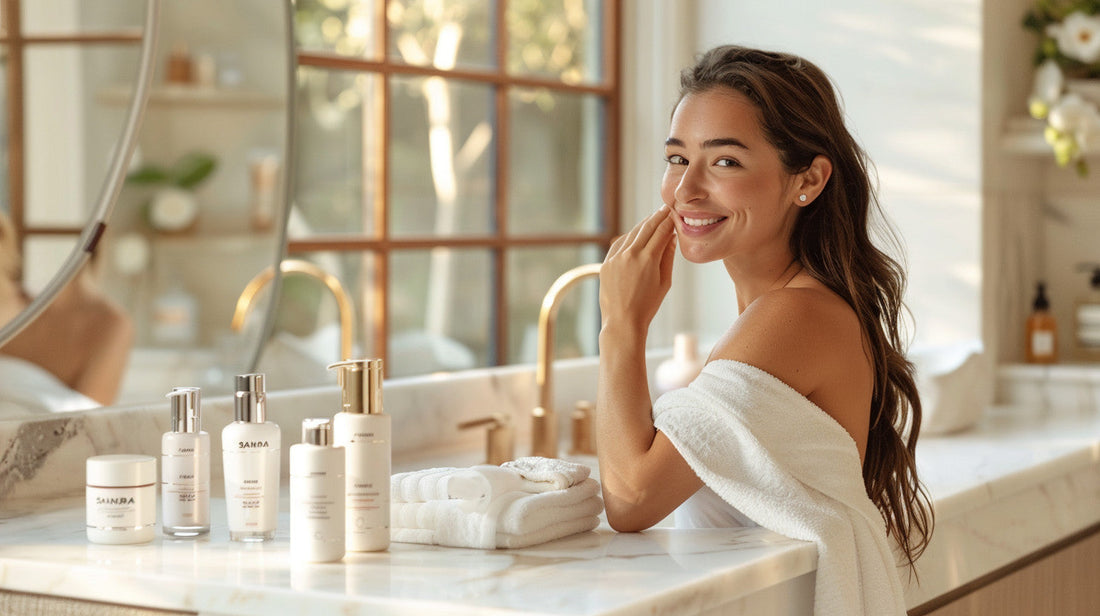What Causes Skin Purging? Insights for Beauticians
For beauticians and skincare enthusiasts alike, understanding what causes skin purging is crucial in guiding clients through their skincare journeys. Skin purging can be a source of confusion, especially when clients expect immediate improvements from new products. Instead of clear skin, they often experience breakouts, leading to frustration and doubt. This article delves into the mysteries of skin purging, equipping you with the knowledge needed to reassure and educate your clients.
Skin purging occurs when a new skincare product accelerates the skin's natural exfoliation process. This phenomenon is often triggered by ingredients that enhance cell turnover, such as retinoids, acids, and certain exfoliants. As these products speed up the shedding of dead skin cells, underlying congestion is brought to the surface, resulting in temporary breakouts. While it may seem counterproductive, this process is actually a positive sign that the product is working effectively.

Understanding the Science Behind Skin Purging
To comprehend what causes skin purging, it's important to grasp the basics of the skin's renewal cycle. Normally, the skin renews itself approximately every 28 days. However, certain skincare ingredients can hasten this process, leading to a temporary period of increased breakouts as the skin adjusts. Retinoids, for example, are known for their ability to stimulate collagen production and cell turnover, which can initially cause purging. Similarly, alpha and beta hydroxy acids, commonly found in exfoliating products, can also prompt purging by unclogging pores and removing dead skin cells.
Not all breakouts are indicative of purging, though. It's essential for beauticians to differentiate between purging and regular breakouts to offer accurate advice. Purging typically occurs in areas where clients are prone to breakouts, and it tends to resolve within four to six weeks. In contrast, regular breakouts may appear in new areas and persist for longer periods. Educating clients on this distinction can help manage their expectations and prevent premature discontinuation of beneficial products.
Ingredients That Commonly Trigger Skin Purging
Beauticians should be aware of the specific ingredients that are more likely to cause purging. Retinoids, as mentioned earlier, are among the most common culprits. These vitamin A derivatives are renowned for their anti-aging and acne-fighting properties. Another group of ingredients to watch out for are exfoliating acids, such as glycolic acid, salicylic acid, and lactic acid. These acids work by dissolving the bonds between dead skin cells, facilitating their removal and revealing fresher skin underneath.
Additionally, products containing benzoyl peroxide, a powerful acne-fighting ingredient, can also lead to purging. While benzoyl peroxide effectively eliminates acne-causing bacteria and reduces inflammation, its initial use can cause increased breakouts as the skin adjusts to its potent action. Beauticians should educate clients about the potential for purging when introducing these ingredients into their routines.
Managing Skin Purging: Tips for Beauticians
To help clients navigate the purging process, beauticians can provide valuable guidance. Here are some tips to consider:
Start Slowly
Advise clients to introduce new products gradually. This allows the skin to acclimate to the active ingredients and minimizes the risk of severe purging. For instance, if they're using a retinoid, suggest starting with a lower concentration and gradually increasing the frequency of application.
Monitor Progress
Encourage clients to keep track of their skin's reaction to new products. This can be done by taking photos or maintaining a skincare journal. By documenting changes, both positive and negative, clients can better understand how their skin responds to different treatments.
Stay Consistent
Remind clients that consistency is key when it comes to skincare. While purging can be discouraging, it's important to stick with the routine and allow the skin time to adjust. Emphasize that the purging phase is temporary and will eventually lead to improved skin texture and clarity.
Consult a Professional
In cases where purging is severe or prolonged, advise clients to seek guidance from a dermatologist or skincare professional. They can offer personalized recommendations and tailor treatments to suit individual skin types and concerns.
Additional Resources for Beauticians
Beauticians seeking further information on managing skin purging and enhancing their skincare knowledge can explore various resources. The Oprah Daily guide on building a skincare routine offers valuable insights into effective product layering. Additionally, the LIVANA Natural blog provides tips on exfoliating without damaging the skin.

FAQs
What is the difference between purging and a breakout?
Purging occurs when active ingredients accelerate the skin's natural exfoliation, revealing underlying congestion. Breakouts, on the other hand, can be caused by various factors, including hormonal changes and improper skincare routines.
How long does skin purging typically last?
Skin purging usually lasts between four to six weeks, depending on the individual's skin type and the products used. Consistency and patience are key during this phase.
Can all skin types experience purging?
While purging is more common in individuals with acne-prone skin, anyone using products that increase cell turnover may experience it. Beauticians should tailor their advice based on each client's unique skin type and concerns.
This article contains affiliate links. We may earn a commission at no extra cost to you.

